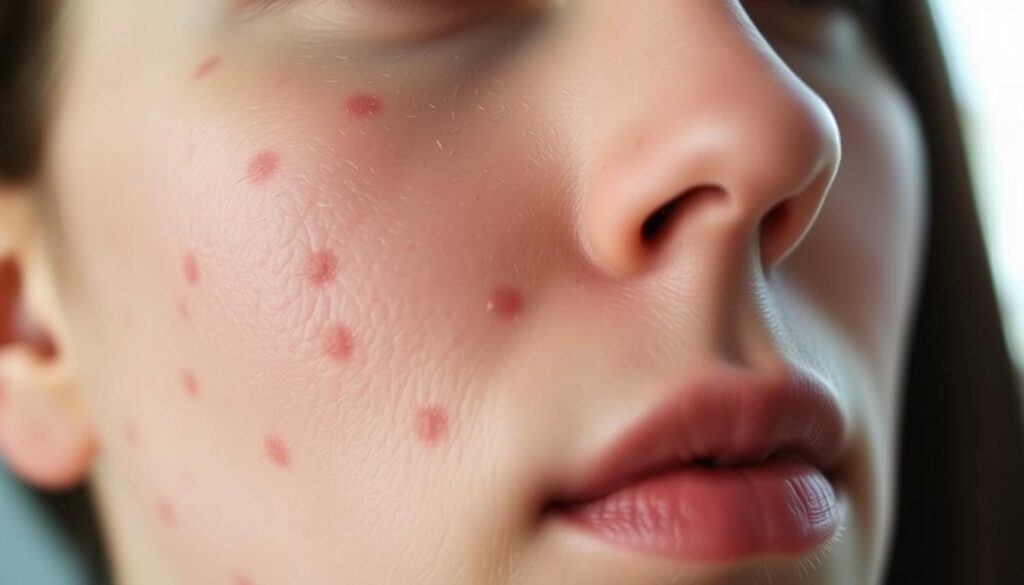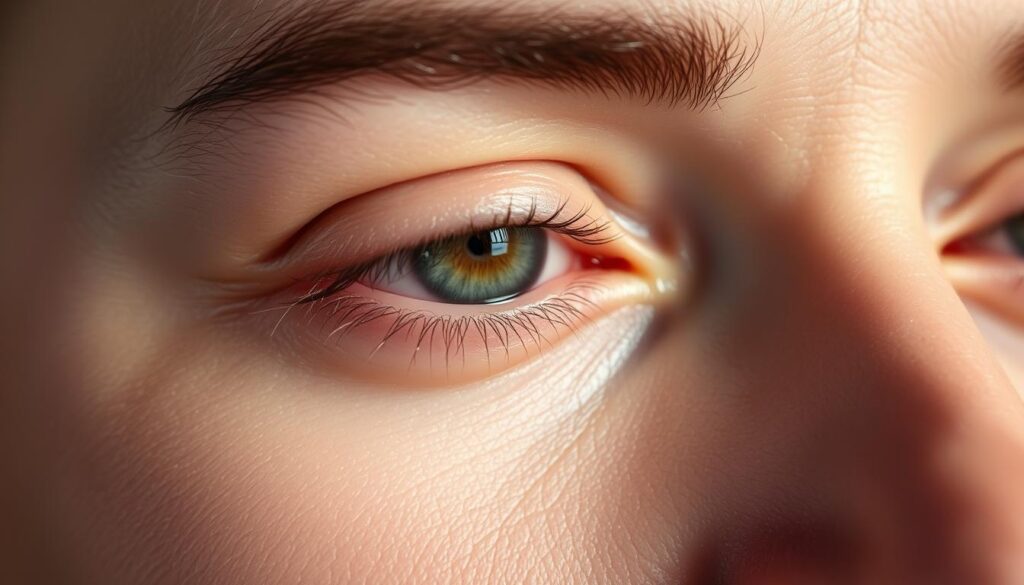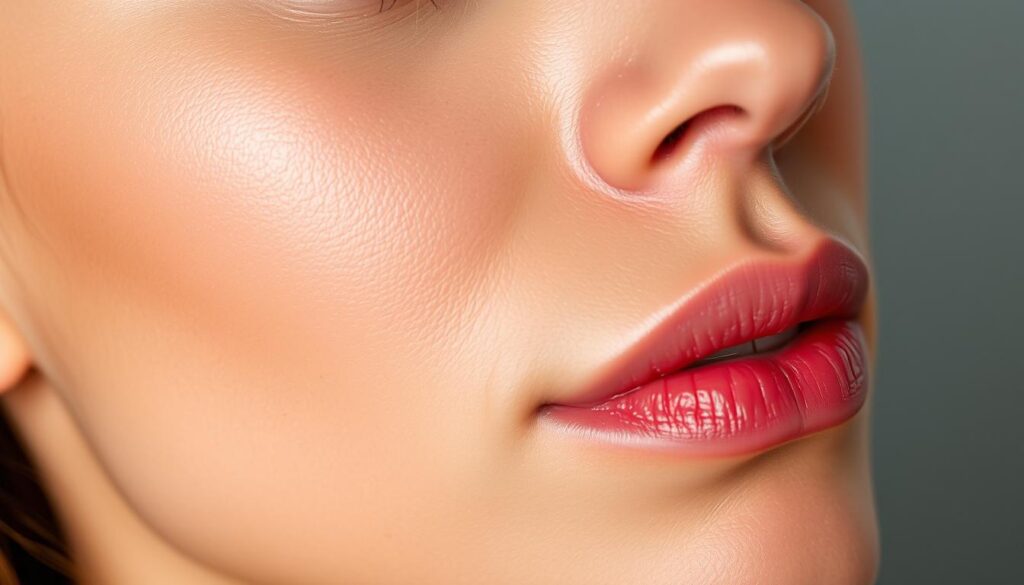Dealing with acne scars can feel overwhelming, but understanding your options is the first step toward improvement. Whether you’re dealing with discoloration, indentations, or raised marks, there are effective ways to address them. This guide will walk you through both natural remedies and professional treatments to help restore your skin’s appearance.
Not all scars are the same. Some are flat and discolored, while others are deep or raised. Identifying your scar type is crucial for choosing the right treatment. For example, atrophic scars often require collagen stimulation, while raised scars may need treatments to reduce inflammation1.
From chemical peels to laser treatments, there are numerous options available. Consulting a dermatologist can help you find the best approach for your skin. With patience and the right care, you can achieve noticeable results and boost your confidence.
Understanding Acne Scars and Their Types
Not all acne scars are the same, and knowing their differences can guide your treatment plan. Scars can vary in appearance, depth, and texture, making it essential to identify their type before choosing a treatment. There are three main categories: atrophic, hypertrophic, and keloid scars. Each type requires a unique approach for effective results.
Atrophic Scars
Atrophic scars are the most common and occur when the skin loses collagen during the healing process. They appear as indentations on the skin and come in three variations:
- Boxcar scars: Broad, box-like depressions with sharp edges, often found on the lower cheeks and jaw2.
- Ice pick scars: Narrow, deep indentations that are challenging to treat, commonly appearing on the cheeks2.
- Rolling scars: Shallow depressions with sloping edges, giving the skin an uneven texture2.
Hypertrophic and Keloid Scars
Unlike atrophic scars, hypertrophic and keloid scars are raised. Hypertrophic scars remain within the boundaries of the original wound, while keloid scars grow beyond them. Both types are more common on the jawline, chest, back, and shoulders, especially in individuals with darker skin tones2.
| Scar Type | Characteristics | Common Locations |
|---|---|---|
| Atrophic | Indentations, loss of collagen | Cheeks, jawline |
| Hypertrophic | Raised, within wound boundaries | Jawline, chest, back |
| Keloid | Raised, extends beyond wound | Shoulders, chest, back |
Identifying your scar type is crucial for choosing the right treatment. A dermatologist can provide a proper diagnosis and recommend tailored options. Factors like skin tone, inflammation, and healing time also play a role in scar appearance3.
Why Addressing Acne Scars Is Essential for Your Skin
Acne scars can linger long after breakouts fade, affecting both your skin and self-esteem. While they may seem like a cosmetic issue, scars can have deeper implications for your overall skin health and confidence. Addressing them proactively can make a significant difference in how you feel and look.
Impact on Skin Health and Confidence
Scars from acne aren’t just surface-level marks. They can disrupt your skin’s natural texture and lead to long-term issues like discoloration or unevenness. Over time, untreated scars may worsen, making it harder to achieve smooth, healthy skin4.
Beyond physical effects, scars can take a toll on your confidence. Many people feel self-conscious about their appearance, which can impact daily interactions and overall well-being. Treating scars not only improves your skin’s appearance but also boosts your self-esteem5.
Early intervention is key. Addressing scars sooner can prevent the need for more aggressive treatments later. For example, procedures like laser therapy or collagen-stimulating treatments are often more effective when scars are fresh.
Dermatologists emphasize the psychological benefits of scar treatment. Clearer skin can lead to a more positive self-image and encourage better skincare habits. Whether you choose natural remedies or professional treatments, taking action is a step toward healthier, happier skin.
How to Get Rid of Acne Scars: Best Methods
Reducing the visibility of acne scars involves a mix of home remedies and professional treatments. Whether you’re dealing with mild discoloration or deeper indentations, there’s a solution tailored to your needs. Understanding your options is the first step toward achieving smoother, healthier skin.
Overview of Treatment Options
There’s no one-size-fits-all approach to treating acne scars. Your choice depends on the scar type, skin condition, and desired results. For example, atrophic scars often respond well to collagen-stimulating treatments like microneedling or dermal fillers6.
Over-the-counter products can help reduce the appearance of mild scars. Ingredients like salicylic acid and lactic acid exfoliate the skin, promoting cell turnover and improving texture7. However, for more severe scarring, professional treatments like laser resurfacing or chemical peels may be necessary.
Professional procedures often require multiple sessions to achieve noticeable results. For instance, laser therapy can significantly reduce scar visibility, but it may take several weeks or months to see full improvement7. Similarly, microneedling, which stimulates collagen production, typically involves multiple treatments for optimal results.
Consulting a dermatologist is crucial for choosing the right treatment. They can assess your skin type, scar severity, and recommend a personalized plan. Whether you opt for a conservative approach or intensive procedure, patience and consistency are key to achieving smoother skin.
Natural Remedies and At-Home Treatments
Natural remedies offer a gentle way to improve the appearance of scars without harsh chemicals. These solutions are often affordable and easy to incorporate into your daily routine. While they may not work for deep or severe scarring, they can be effective for mild discoloration and texture issues.

Using Ingredients Like Lactic Acid and Salicylic Acid
Lactic acid and salicylic acid are popular for their exfoliating properties. They help remove dead skin cells, promote cell turnover, and brighten your skin tone. Studies show that these ingredients can reduce discoloration and improve texture over time8.
When using these acids, start with a low concentration to avoid irritation. Apply them once or twice a week, gradually increasing frequency as your skin adjusts. Always follow up with sunscreen to protect your skin from UV damage.
Home Remedies such as Rosehip and Aloe Vera
Rosehip oil and aloe vera are excellent natural options for scar care. Rosehip oil is rich in vitamins and antioxidants, which can help fade scars and improve skin elasticity9. Aloe vera, on the other hand, soothes inflammation and promotes healing10.
To use these remedies, apply a small amount directly to the affected area. For best results, use them consistently as part of your nightly skincare routine. Patch test new products to ensure they don’t cause irritation.
| Ingredient | Benefits | How to Use |
|---|---|---|
| Lactic Acid | Exfoliates, brightens skin | Apply 1-2 times weekly |
| Salicylic Acid | Reduces discoloration | Use in low concentrations |
| Rosehip Oil | Fades scars, improves elasticity | Apply nightly |
| Aloe Vera | Soothes, promotes healing | Use directly on scars |
While natural remedies can be effective, they may not work for everyone. If you don’t see improvement after several weeks, consult a dermatologist for professional advice. Consistency is key, so stick to your routine and monitor your skin’s progress.
Professional Treatment Options for Acne Scars
For those seeking significant improvements in skin texture, professional treatments provide advanced solutions. These procedures are ideal for deeper or more complex scarring, offering dramatic results that at-home methods may not achieve. A dermatologist can guide you in choosing the best option based on your scar type and skin condition.
Laser Resurfacing and Chemical Peels
Laser resurfacing works by removing the outer layers of skin, revealing fresher tissue underneath. This process also stimulates collagen production, which helps improve texture and reduce discoloration. Fractional lasers, such as Fraxel, are commonly used and typically require five to six sessions for optimal results11.
Chemical peels use acids like glycolic or trichloroacetic acid to exfoliate the top layers of skin. This treatment smooths texture and reduces the appearance of scars. Peels with 20-40% glycolic acid are often recommended for atrophic scars12.
Microneedling and Injections
Microneedling involves creating tiny micro-injuries in the skin to trigger natural healing and boost collagen. This procedure is effective for rolling and boxcar scars. A series of five sessions, spaced four to six weeks apart, is usually recommended12.
Injections like hyaluronic acid fillers or corticosteroids can elevate depressed scars or soften raised ones. Fillers can last up to a year, while Sculptra may provide results for up to two years12.
These treatments are performed by trained dermatologists and require careful aftercare. Sunscreen with SPF 30 or higher is essential to protect your skin and maintain results12. Consulting a professional ensures you receive a personalized plan tailored to your needs.
Preventing New Acne and Future Scarring
Preventing new breakouts is just as important as treating existing scars for long-term skin health. By adopting healthy habits and a consistent routine, you can minimize the risk of future scarring and maintain a clear, radiant complexion.
Daily Skincare Routine and Picking Prevention
A daily skincare routine is your first line of defense against acne and scarring. Start with a gentle cleanser to remove dirt and excess oil without stripping your skin. Follow up with a non-comedogenic moisturizer to keep your skin hydrated and balanced13.
Exfoliation is key to preventing clogged pores, but avoid overdoing it. Use products with salicylic acid or lactic acid once or twice a week to promote cell turnover and keep your skin smooth14.
One of the most important habits to adopt is avoiding picking or popping pimples. This can lead to inflammation and increase the risk of scarring13. Instead, treat breakouts with spot treatments or consult your dermatologist for advice.
Protecting Your Skin from Harmful Factors
Sunscreen is essential for protecting your skin from harmful UV rays, which can darken scars and make them more noticeable. Use a broad-spectrum SPF 30 or higher daily, even on cloudy days14.
Stress and diet also play a role in skin health. Manage stress through activities like yoga or meditation, and maintain a balanced diet rich in fruits, vegetables, and whole grains. These habits can help reduce inflammation and promote healing13.
Working with Your Dermatologist
Regular check-ups with your dermatologist ensure you’re on the right track. They can provide personalized advice and recommend treatments tailored to your skin type and concerns13.
By focusing on prevention, you’re not only treating existing scars but also safeguarding your skin’s future. Consistency and care are the keys to achieving long-term results and boosting your confidence.
Post-Treatment Care for Long-Lasting Results
Maintaining your skin’s health after treatment is essential for achieving lasting results. Proper care ensures your skin heals effectively and minimizes the risk of complications. Whether you’ve undergone laser therapy, microneedling, or chemical peels, post-treatment routines play a crucial role in your recovery15.
Importance of Sunscreen and Moisturizing
Sunscreen is a non-negotiable part of post-treatment care. UV exposure can darken scars and delay healing, making broad-spectrum SPF 30 or higher a daily necessity16. Apply it even on cloudy days to protect your skin from harmful rays.
Moisturizing helps maintain your skin’s barrier, reducing irritation and promoting healing. Look for gentle, non-comedogenic products that hydrate without clogging pores. Consistent use can improve texture and keep your skin balanced17.
Gentle Cleansing and Dermatologist Advice
Cleanse your skin with a mild, fragrance-free product to avoid stripping essential moisture. Avoid harsh scrubs or exfoliants until your dermatologist gives the green light. Following their aftercare instructions ensures optimal results and minimizes side effects15.
Regular follow-ups with your dermatologist allow them to monitor progress and adjust your regimen if needed. This personalized approach helps you achieve the best possible outcome17.
Post-treatment care is just as important as the procedure itself. By protecting your skin and following expert advice, you can enjoy smoother, healthier skin for years to come.
Working with Your Dermatologist on a Customized Plan
Your skin is unique, and so is the way it heals—working with a dermatologist ensures a plan tailored just for you. No two skin types or scars are exactly alike, which is why personalization is key to achieving the best results18.
Consulting a dermatologist allows them to evaluate your specific needs. They’ll consider factors like your skin type, scar severity, and desired outcomes to recommend the most effective approach19.
Customized plans often include a combination of treatments. For example, laser resurfacing may be paired with fillers or chemical peels to address different scar types20. This multi-faceted approach ensures comprehensive improvement in your skin’s appearance.
Close monitoring and follow-up sessions are essential. Your dermatologist will track your progress and make adjustments as needed to keep the treatment process effective18.
It’s important to weigh the benefits, expected time frames, and potential risks of each procedure. Your dermatologist will guide you through these decisions, empowering you to be an active participant in your care19.
Here’s a comparison of common treatments and their benefits:
| Treatment | Benefits | Time Frame |
|---|---|---|
| Laser Resurfacing | Improves texture, reduces discoloration | 5-6 sessions |
| Chemical Peels | Smooths skin, evens tone | 3-4 sessions |
| Fillers | Elevates depressed scars | 6-12 months |
| Microneedling | Stimulates collagen, improves texture | 4-6 sessions |
A tailored plan not only improves your skin but also boosts your confidence. By working closely with your dermatologist, you can achieve long-lasting results and enjoy healthier, smoother skin20.
Additional Tips and Remedies for Clearer Skin
Enhancing your skin’s appearance can be simple with the right over-the-counter products. These solutions are affordable, easy to use, and can complement professional treatments for better results. By integrating them into your daily routine, you can improve texture, reduce discoloration, and maintain a healthy glow.
Integrating Over-the-Counter Products
Over-the-counter products are a great way to address mild scarring and discoloration. Ingredients like benzoyl peroxide, retinoids, and exfoliating acids can make a noticeable difference. For example, retinoids help lighten hyperpigmented scars, especially for those with darker skin tones21.
Here’s how to use these products effectively:
- Benzoyl Peroxide: Reduces inflammation and prevents new breakouts. Start with a low concentration to avoid irritation22.
- Retinoids: Promote cell turnover and improve skin texture. Apply at night and follow with sunscreen during the day21.
- Exfoliating Acids: Salicylic acid and lactic acid remove dead skin cells, revealing fresher skin underneath. Use 1-2 times weekly for best results21.
Consistency is key when using over-the-counter products. Improvements may take several weeks, so be patient and monitor your skin’s response. If irritation occurs, reduce usage or switch to gentler alternatives.
These products can also help maintain the results of professional treatments. For instance, using retinoids after laser therapy can enhance collagen production and improve texture21. Always follow product instructions to avoid side effects like increased discoloration.
Combining over-the-counter care with professional advice yields the best results. A dermatologist can recommend products tailored to your skin type and scar severity. With the right approach, you can achieve smoother, healthier skin and boost your confidence.
Conclusion
Achieving smoother, healthier skin is possible with the right care and approach. Understanding your scar type is the first step toward effective treatment. Whether you choose natural remedies or professional procedures, each method offers unique benefits for improving your skin’s appearance23.
Working with a dermatologist ensures a personalized plan tailored to your needs. Treatments like laser resurfacing and microneedling can yield significant improvements, especially when combined with consistent aftercare24. Patience and persistence are key to seeing lasting results.
Maintaining a daily skincare routine helps protect your skin and prevent future scarring. Sunscreen, gentle cleansing, and regular check-ups with your dermatologist are essential for long-term success. Your journey to clearer skin starts with taking that first step.
Thank you for reading. You’re now equipped with the knowledge to make informed decisions about your skin. Here’s to healthier, more confident you!



